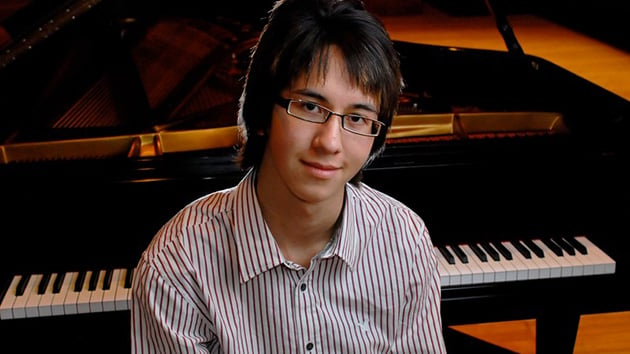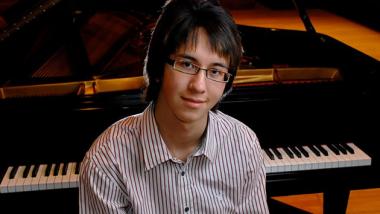
Despite occasional declarations that classical music is dead, there has been no shortage of stunning talent among the new generation of classical musicians.
Competition for performing engagements is far fiercer than ever. Dazzling technique that seemed impossible just a few decades ago is common now, and few international competitions function as career launch pads. Nowadays, a performer needs a little something extra.
Originality distinguishes Charlie Albright, a 26-year-old from the state of Washington who boasts a Gilmore Young Artist Award, and an economics degree from Harvard, from many other artists his age. That quality lent a unique perspective to his San Francisco solo debut on Monday night at the SFJAZZ Center, sponsored by S.F. Performances.
From the very first measure of Beethoven's “Moonlight” Sonata (Op. 27/2) Albright departed from the well-traveled road. The tempo was decisively halting, the middle voice dominated, and he played some of the left hand an octave lower than written, for darker colors. He often pulled back the dynamics after crescendos. The stuttering eighth note chords in the opening theme of the third movement were jarring, disrupting the driven energy. It seemed as if Albright was deconstructing and reconstructing the piece, but the result was unwontedly intrusive.
In Mussorgsky’s Pictures at an Exhibition Albright departed often from the score. The opening Promenade seemed gentle and pastoral, even prettier than Ravel’s brassy orchestration. The hopping left hand in “Bydlo” seemed to dance, instead of depicting the oxcart miserably slogging through sticky mud in the bitterly cold Polish winter. Added tremolo and glissando were effective at times, though perhaps distracting to a purist.
Yet, in light and deft tableaus, such as the “Tuileries” and the” Limoges Market,” Albright's rapid-fire technique brought much charm and character to the scenes, while remaining more faithful to the score.
There were more drastic departures in “The Hut of Baba-Yaga” and “The Great Gate of Kiev.” The recapitulation of the Baba-Yaga theme was hauntingly quiet instead of brutal, and Albright went so far as to rewrite a segment of the “Great Gate.” However, not all departures seemed intentional: The left hand line in two measures of the score’s very last page was played as if it were in the treble clef instead of the bass clef, for example. There were numerous incorrect chords and notes throughout, which made me wonder about Albright's approach to learning the music.
Albright told his audience that he learned to play by ear in his early years. That has also made him an excellent improviser. After performing the Beethoven Sonata, Albright asked the audience for notes, on which he proceeded to perform an extravagant, Chopinesque improvisation. Such turns were commonplace in 19th-century recitals, and to witness such spontaneity flourish in front of us was a rare treat. If I were to nit-pick, though, the pianist somehow arrived at a different key from the beginning at the end, moving from G-Sharp Minor to C-Sharp Minor. [Improvisation was] commonplace in 19th-century recitals, and to witness such spontaneity flourish in front of us was a rare treat.
Albright showed off his lightning-fast fingers on Chopin's youthful Variations on “Là ci darem la mano” and Volodos' Concert Paraphrase of the Mozart Turkish March performed as an encore. In Chopin, Albright was charming and playful. Without unexpected distractions and departures from the score, it was far more comfortable to go along on the thrill ride with him.
With his ample technique and originality, Albright’s posture, as well as his ample technique and originality, seems to emulate the eccentric yet impeccable Glenn Gould. Even though he did not sit as low as Gould did, his head was slung low, often hovering right above his hands, and his neck was buried in his shoulders. Unfortunately, such a posture places physical constraints on the pianist, limiting his ability to transfer power to the instrument in fast passages, much needed in the Mussorgsky and Volodos pieces.

